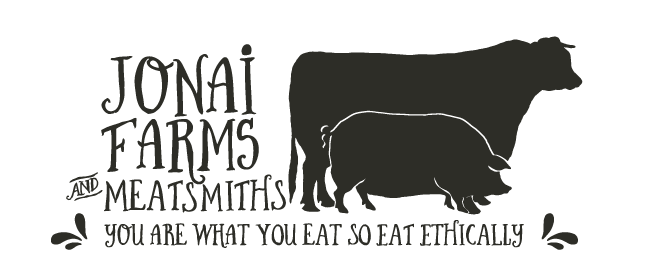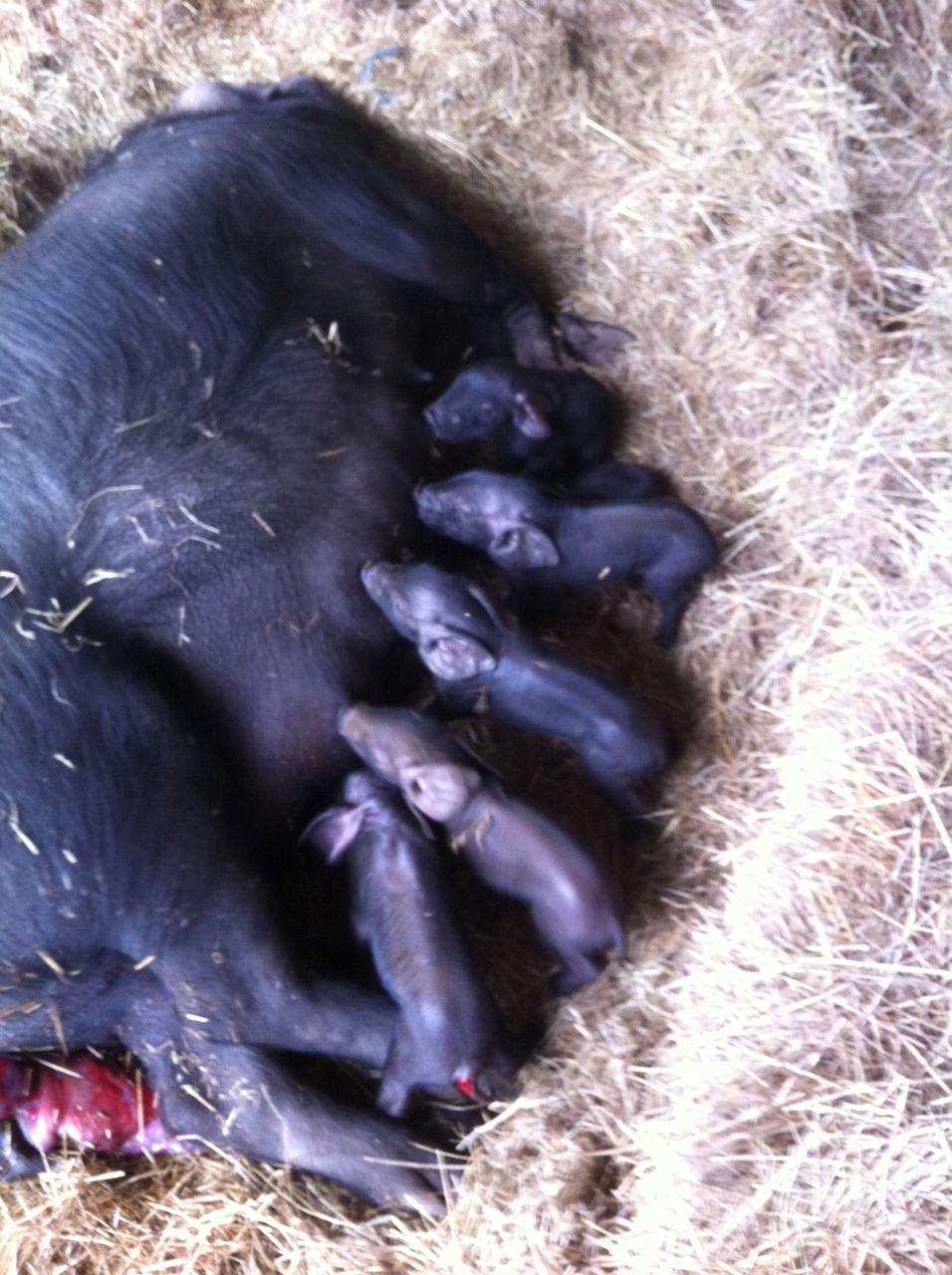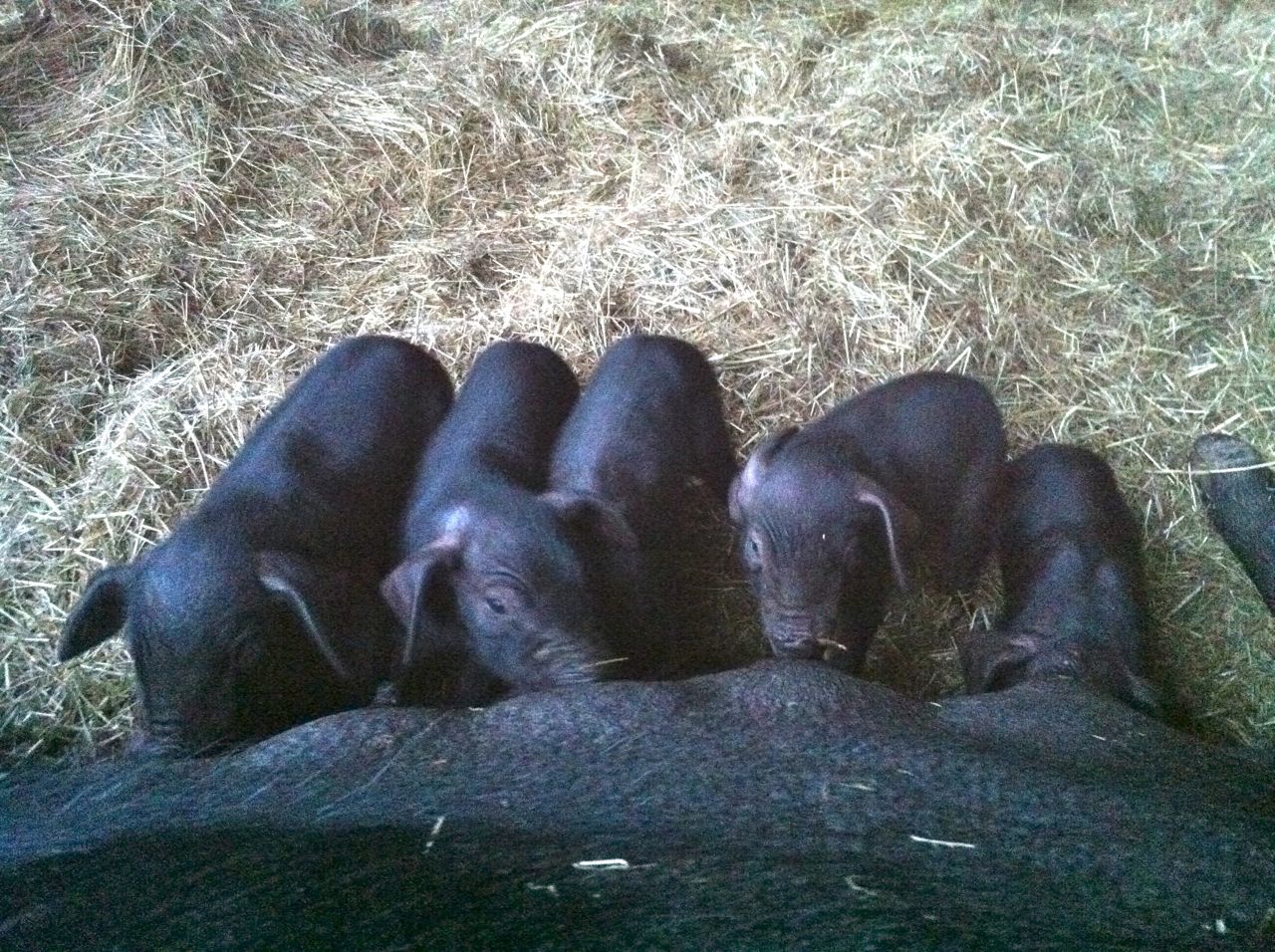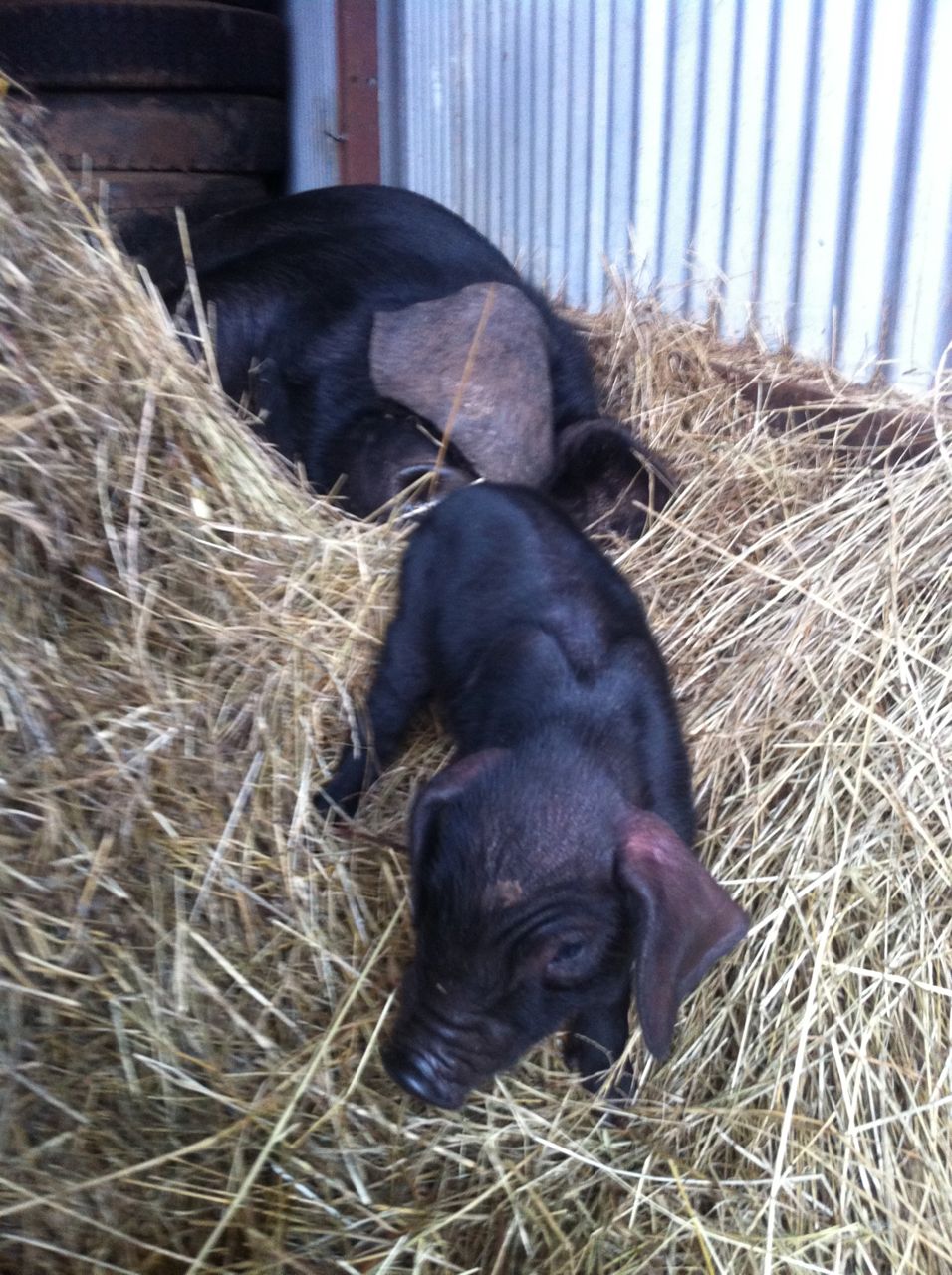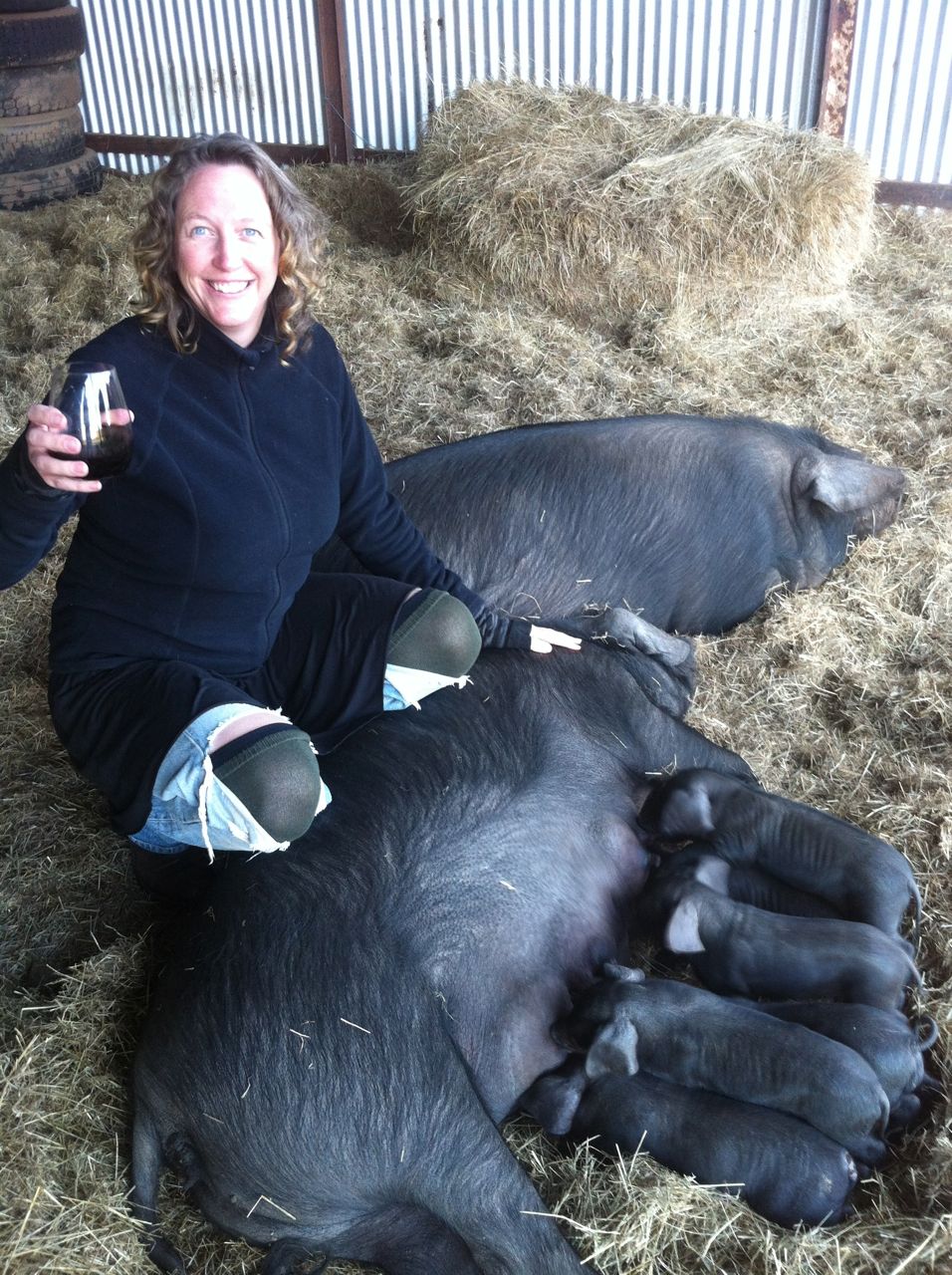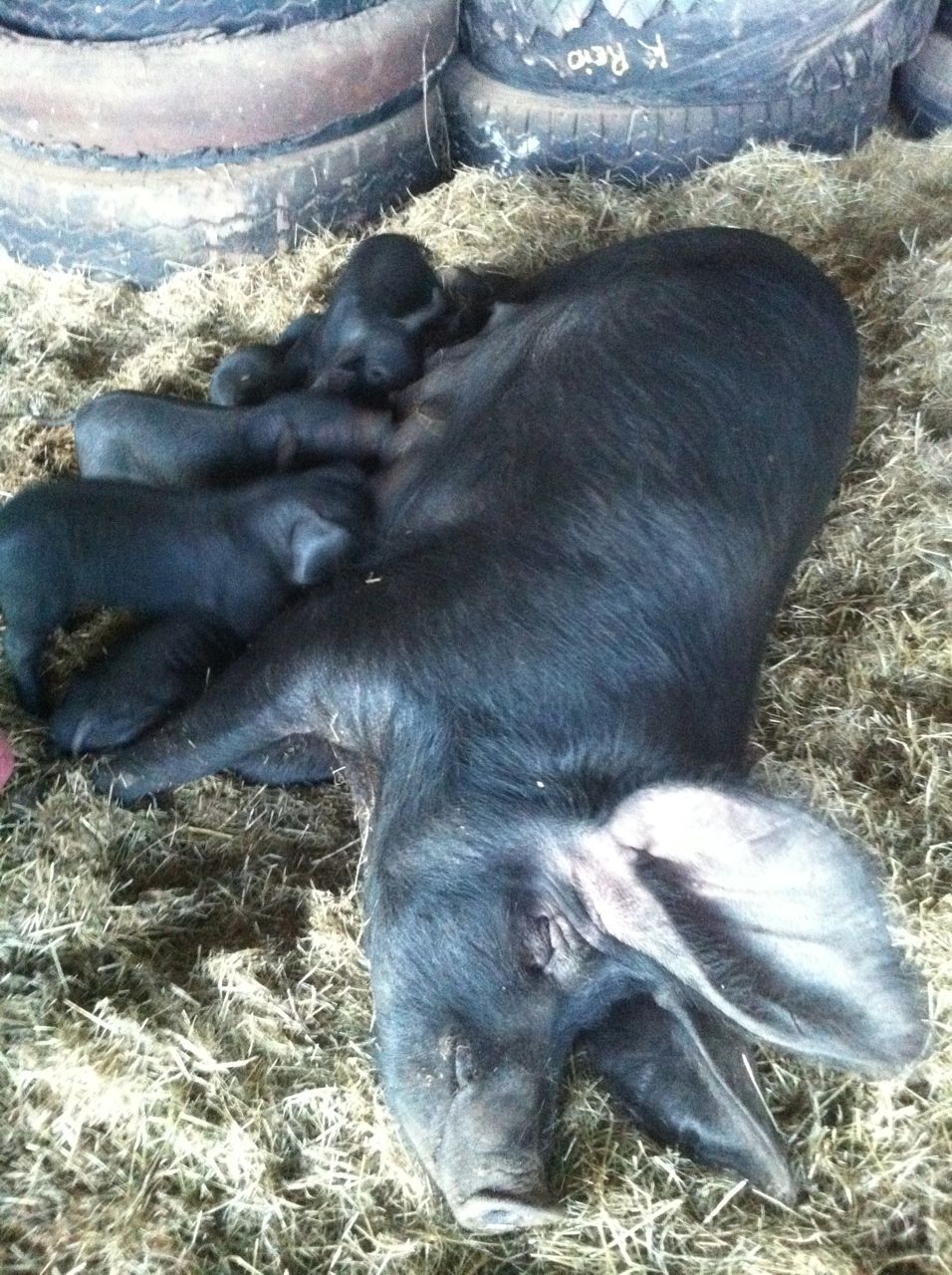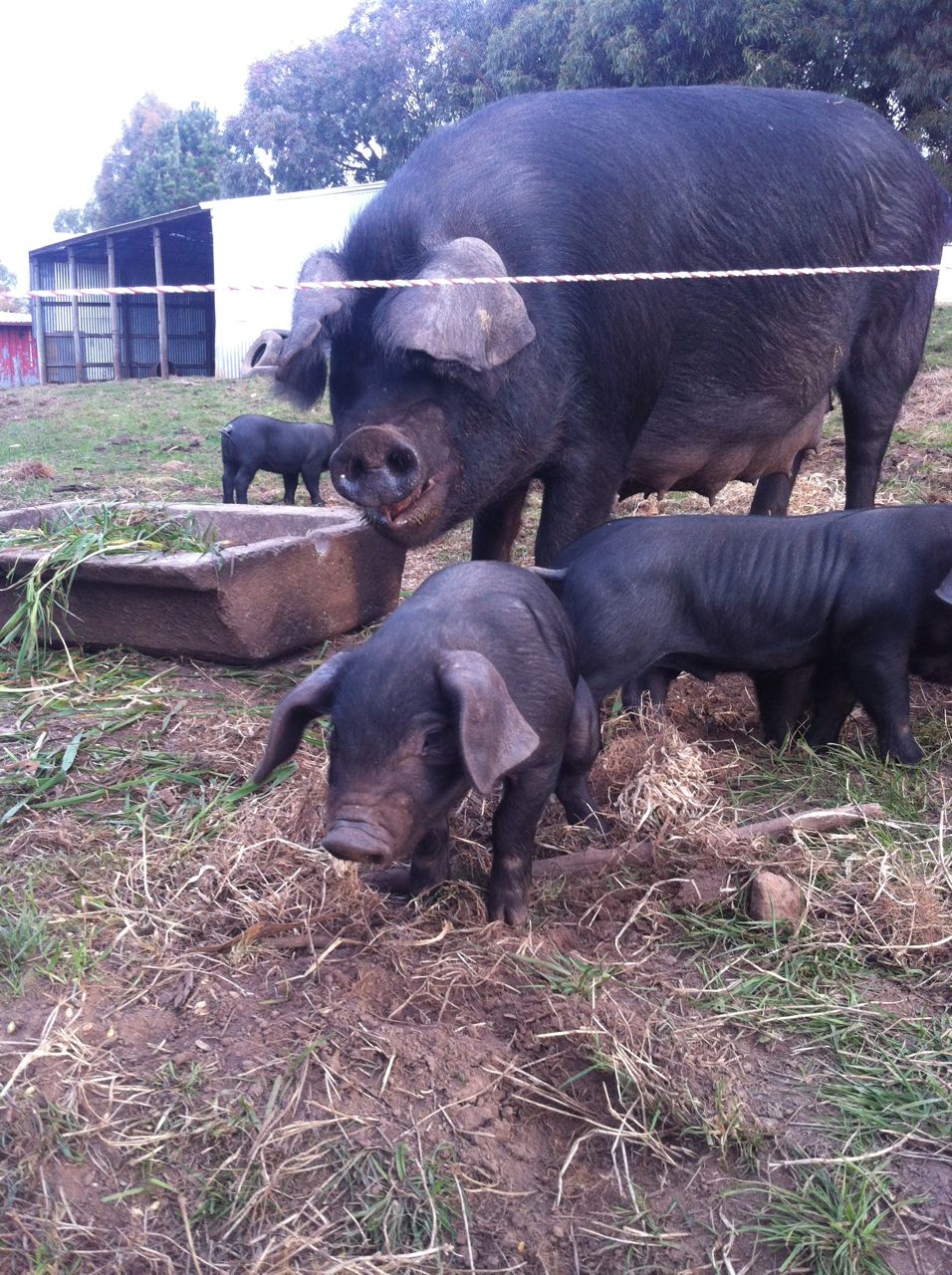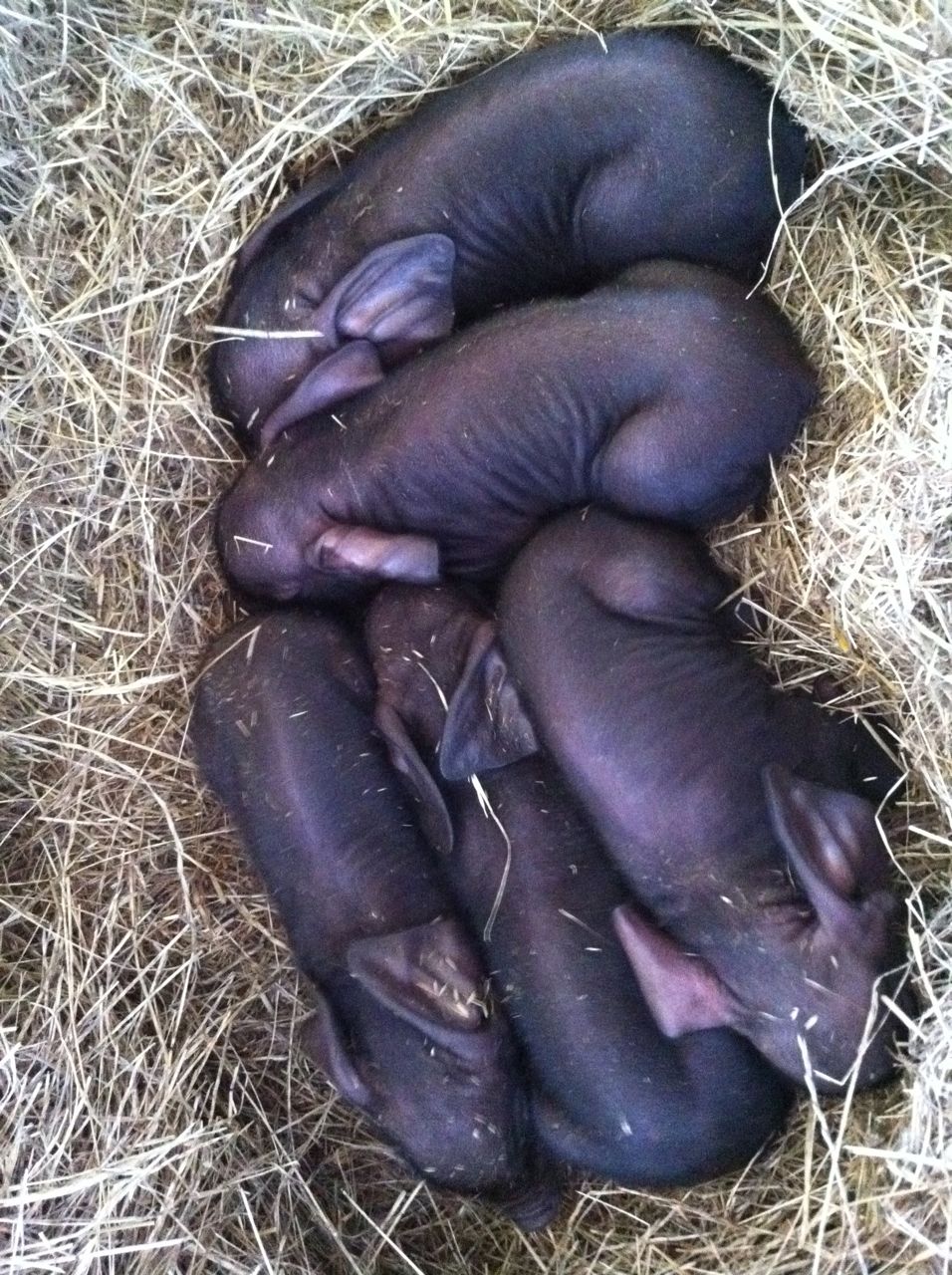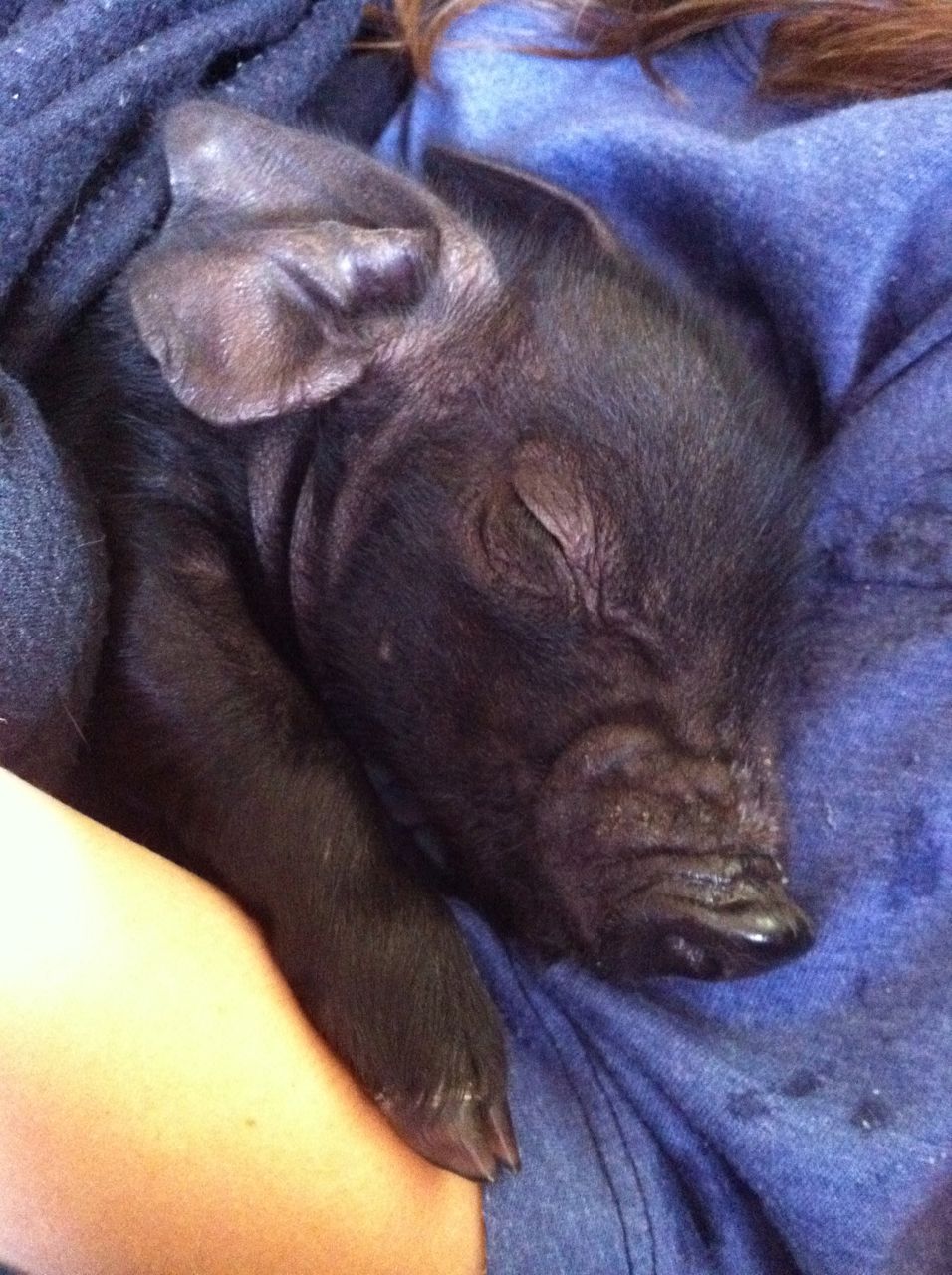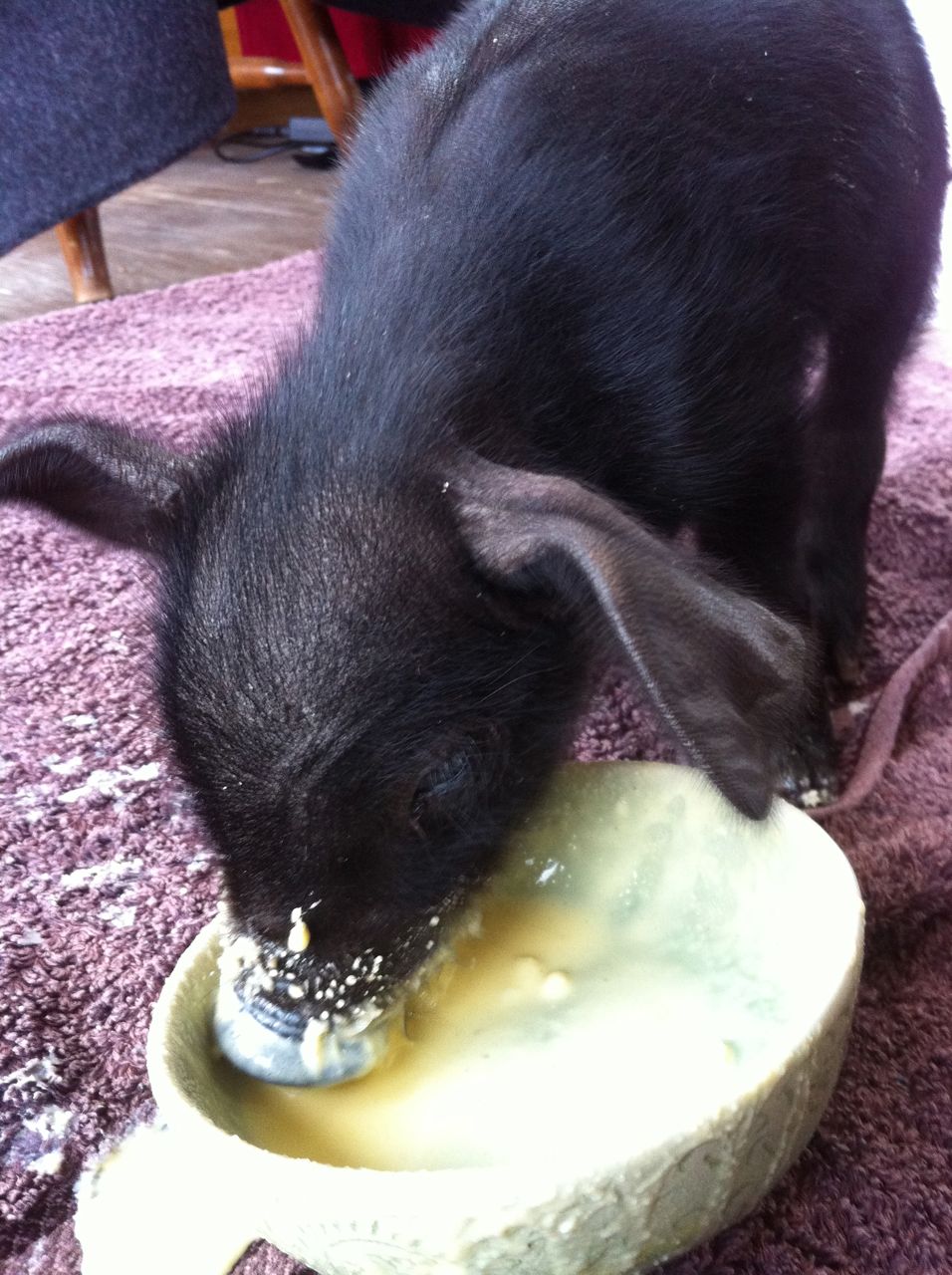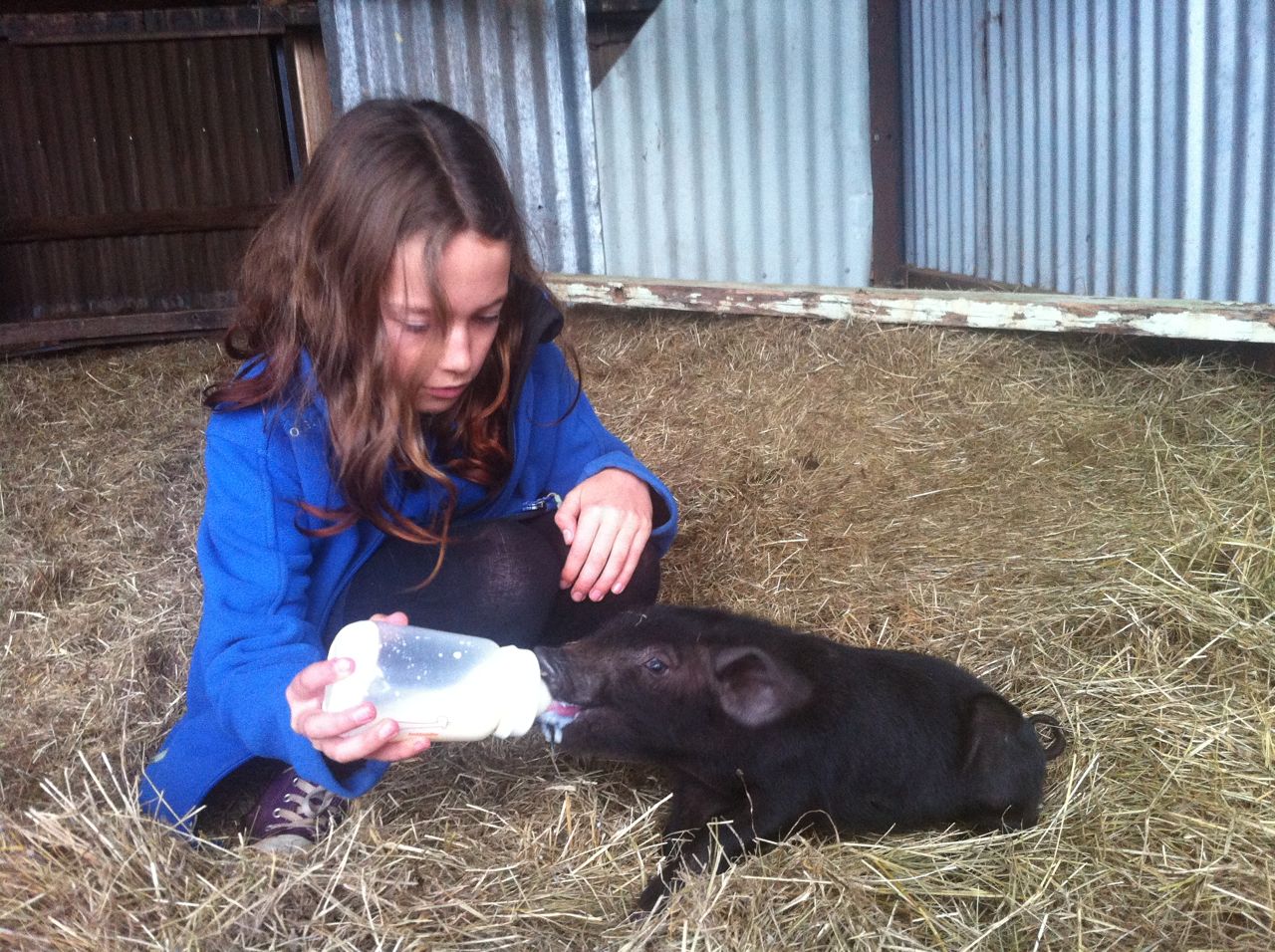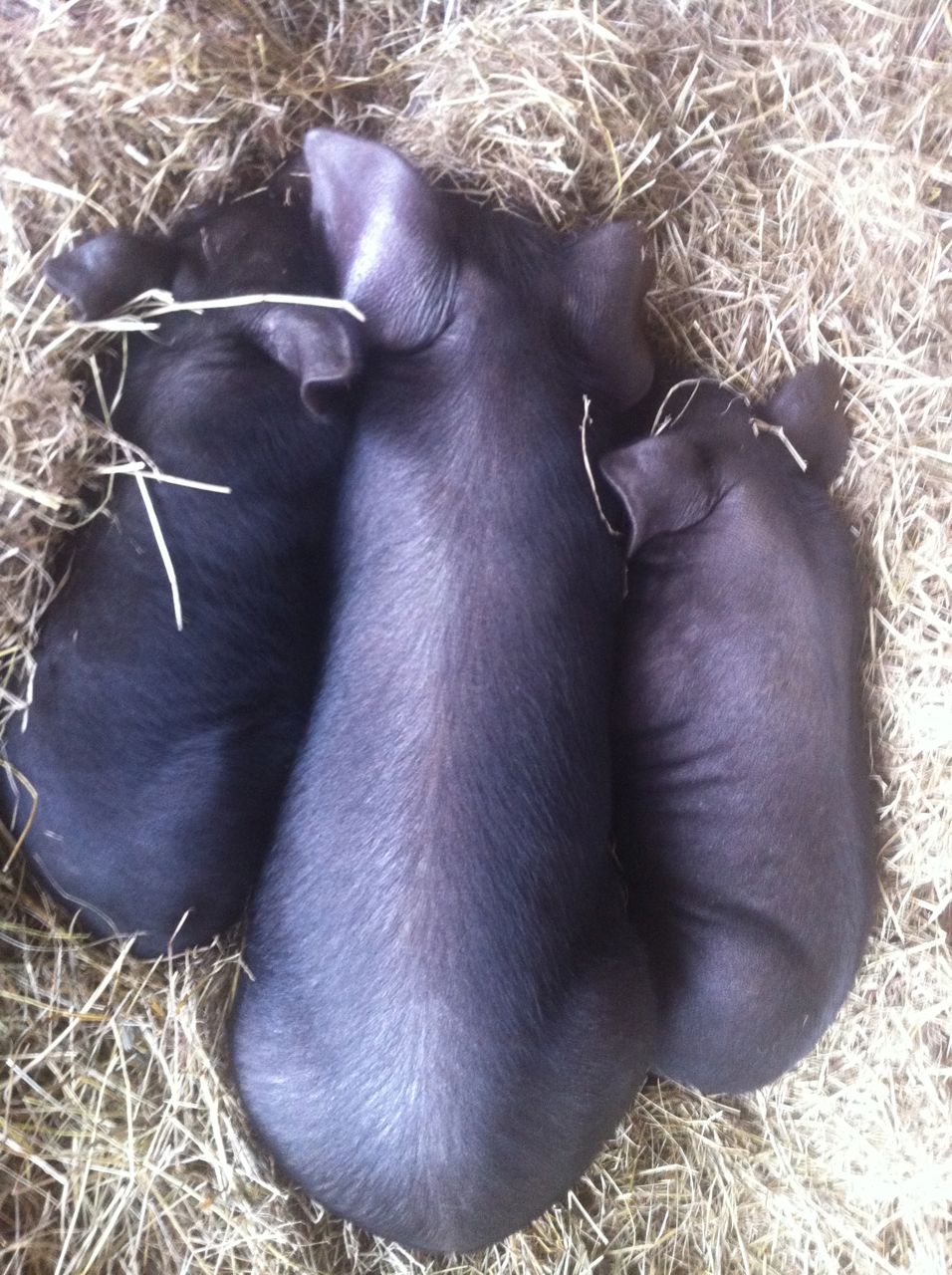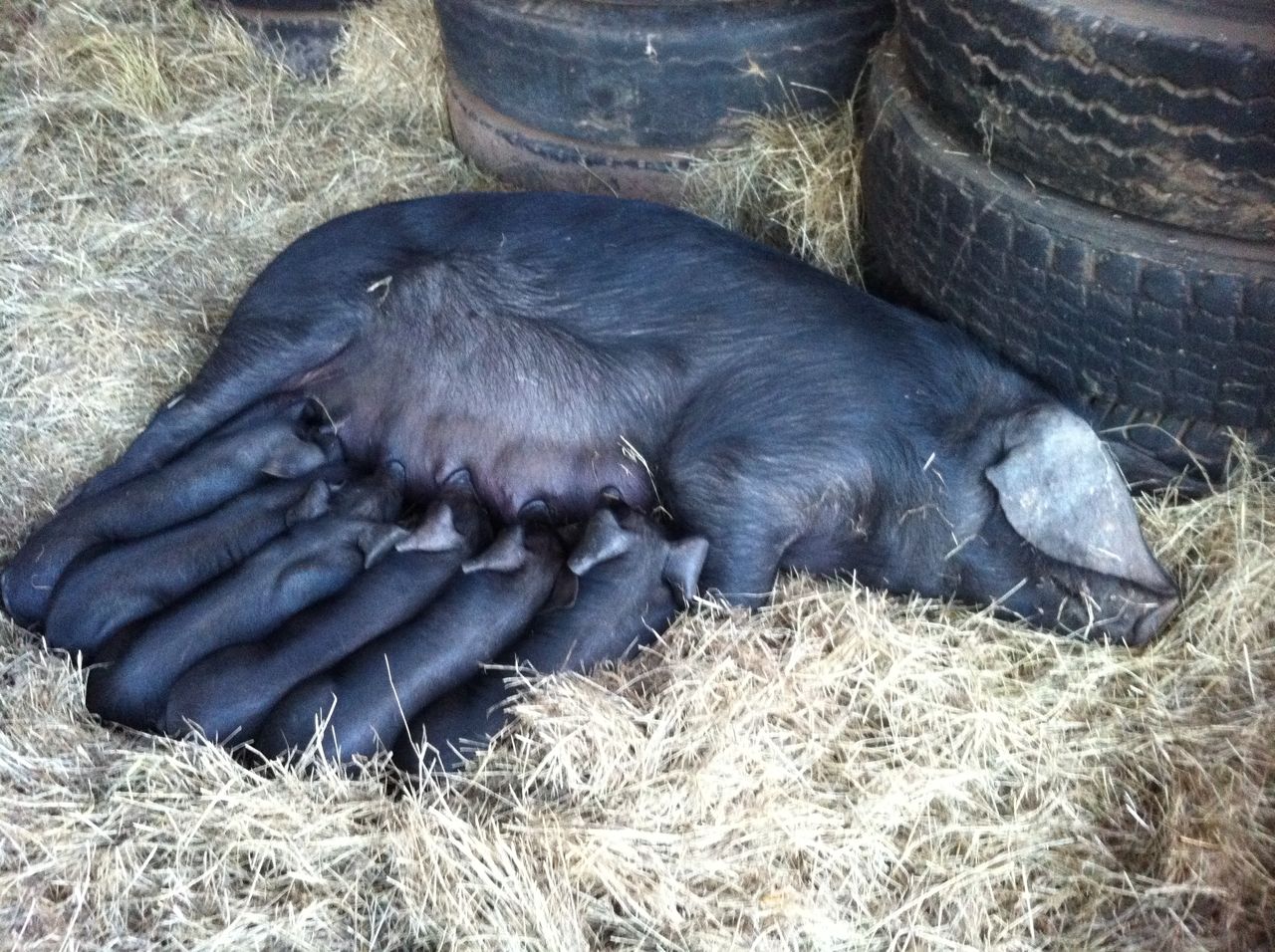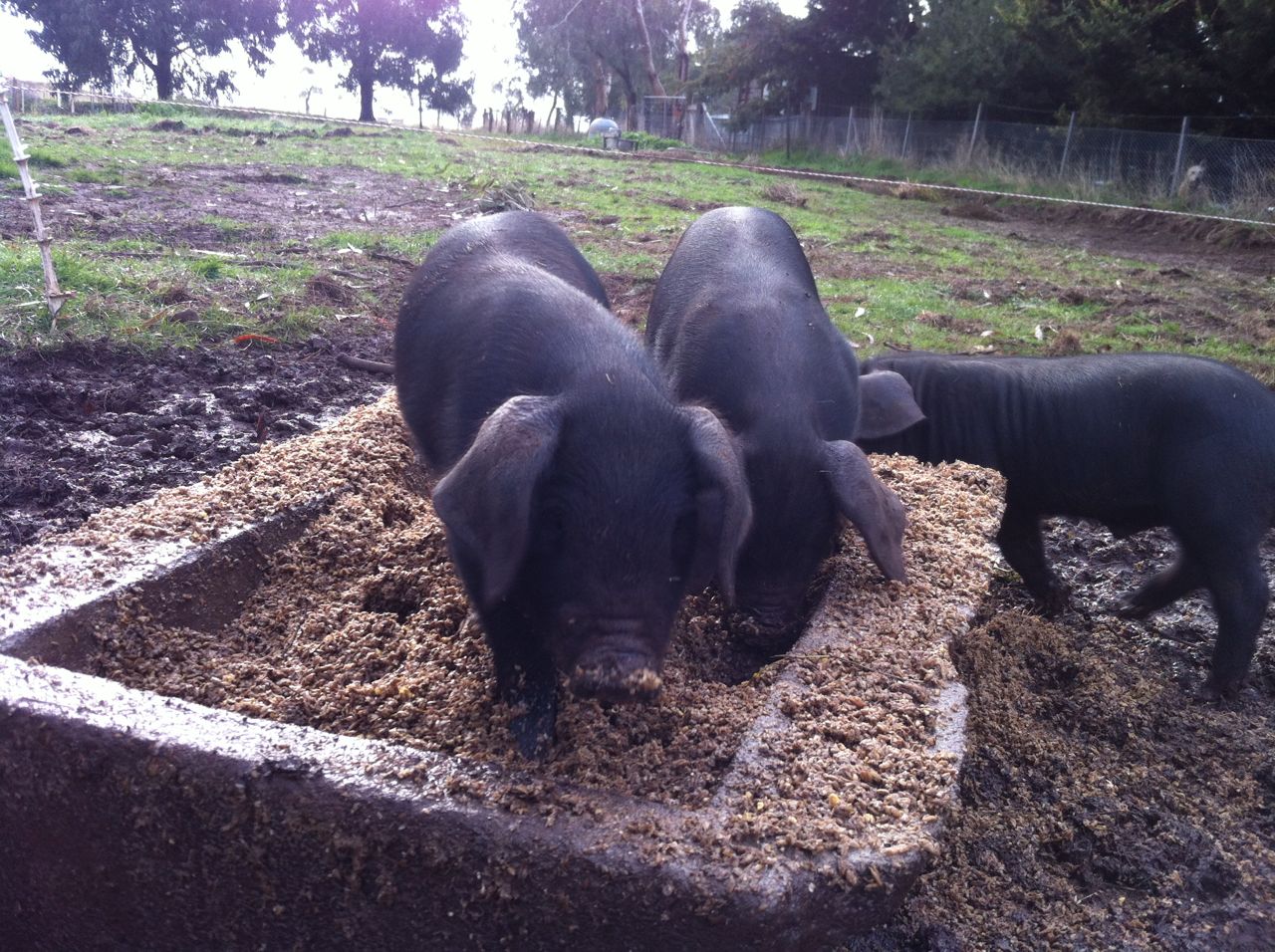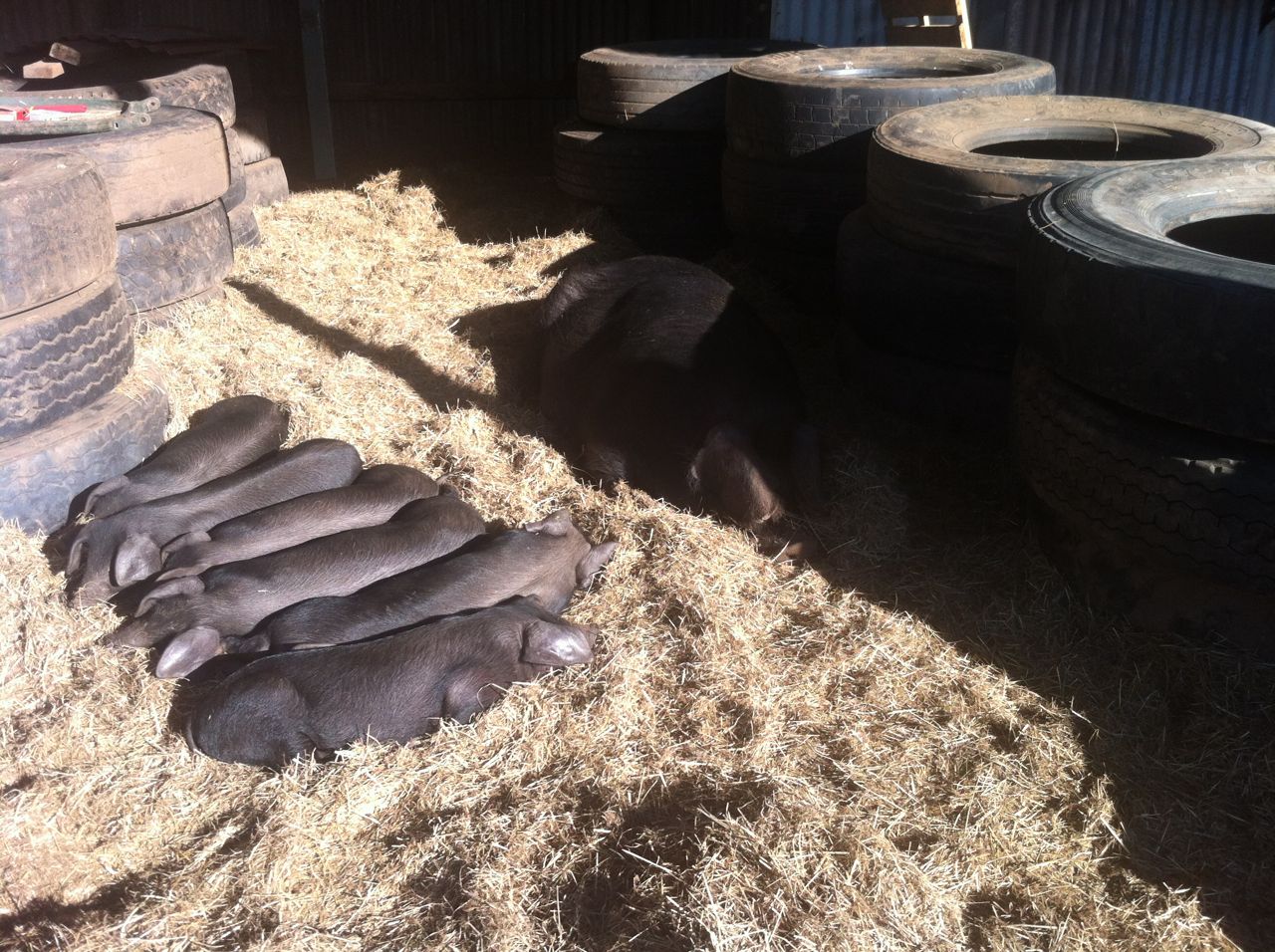Here at Jonai Farms we had what seemed a long wait for our first litter of piglets. First, it took a few months longer than expected to get any pigs. Then they were younger than we’d planned, so we needed to wait a bit longer before we bred them. Then we waited (3 months, 3 weeks, and 3 days, to be exact - not a bad gestation period, hey? And by the way, before their first litter, the girls are gilts. After they farrow (give birth), they’re sows). Big Mama was meant to be first, but she didn’t get pregnant during her first cycle alone with Borg. While we waited and wondered, another gilt busted through the electric wire to get to Borg when she cycled, and low and behold, she was up the duff. We named her Keen.
At last, spot on her due date, the 3rd of May, Keen farrowed, giving birth to eight little black piglets - one stillborn and one we think was squashed before we got to them in the early hours of the morning. And they were totally adorable.
Keen has proven to be a good mum. She was in the nursery paddock with Big Mama, who was very pregnant (or ‘in pig’, as they say) herself by this stage, and who shouldered the auntie burden with panache, minding the little piglets once Keen was able to hoist herself out of the barn and head out to eat voraciously to meet her increased energy demands feeding six mad little suckers.
Sadly, we made some mistakes. The new piglets were just as happy to suckle off the heavily pregnant Big Mama, and as we’d read that they often adopt each other’s piglets when they don’t have enough teats, etc, we didn’t think this was a concern. But when it was Big Mama’s turn to farrow, the new piglets had to compete with ‘the adolescents’, as we started calling the now two-week-olds, and they didn’t compete well. Big Mama had given birth to seven piglets of her own (of which one was stillborn and another squashed again), and they were no match for Keen’s solid little progeny. Within 24 hours, we’d closed Big Mama and her brood in away from the others, but the damage had been done - the new piglets had missed out on their mama’s colostrum.
When one fell sick at about a week old, we were perplexed. She was having trouble walking, and I thought perhaps it was an overlooked case of splay leg. We brought her inside to keep her warm and feed her various concoctions based on recipes from old-school pig-rearing books, other pig farmers, and observation of what she liked to eat. The bottle failed (was she simply too small still?), but we could get a decent mix of raw cow’s milk with a bit of sweetened condensed milk and corn meal into her with the syringe, and soon she was happy to slurp it from a flat dish.
But the little piglet’s appetite was very changeable, and her willingness to walk was as well. She appeared to be in pain when she stood up. The day before Stuart and I were to fly to Tassie to visit Mount Gnomon and Black Ridge free-range pig farms, she seemed stronger, and Antigone had proven a good nursemaid.
While we were away, the dear little piglet struggled on, and then came the call from our friend Clare, who was looking after the farm & its menagerie of animals and kids while we were away: another sick piglet, same symptoms. Clare and Antigone (and Stuart’s parents, who also did a stint of farmsitting during our five-day Tassie adventure) did their best, feeding both sick piglets and keeping them warm.
The night we returned, the first little sick piglet looked frightfully frail, and died overnight. Stuart took the second one to the vet that day, and though the local vet doesn’t have a great deal of experience with pigs, he thought it was probably a kind of pig arthritis bacterial illness, contracted through the umbilical cord, leaving the piglets incapacitated with painful joints. He didn’t believe she would recover, and so she was put down with a lethal injection. At $80 for the consult and shot, this will not prove to be a viable way to humanely euthanise sick piglets, an issue we’re now discussing.
Alas, a couple days on and one of Big Mama’s remaining two piglets showed symptoms of the same illness. By this stage, we were in contact with Chris Richards and Associates, who are specialist pig vets. They were scheduled to visit us the next week. So we started giving the new sick piglet supplementary feeds, but leaving her out with the others to hopefully keep her stronger and more competitive with the others. She responded well to the increased feeds and began to put on weight.
When the vet visited a week ago, she was pleased with the little piglet’s progress and thought that with some penicillin she would get over the illness entirely. In fact, she made a full recovery before the penicillin even arrived a few days later. We’ll always wonder whether the second one would have been saveable as well.
As well as the sick piglet, however, it seems Keen was losing weight too quickly - those six little suckers are clearly very avid feeders and now a robust six weeks old. So we made a quick decision - we put Keen on her own with Big Mama’s two dear little piglets to ensure the sick one especially doesn’t have to compete for lots of healthy mama’s milk, while giving Keen extra rations, and left the rowdy six out with Big Mama, meanwhile giving all of them endless supplies of spent brewer’s grain, fresh, crushed commercial grain and the usual (no meat) kitchen scraps, including whey from my cheesemaking.
Come November, we’ll be shipping the same piglets we’ve worked so hard to protect off to the abattoir. I’ve named our little survivor ‘Charlotte’ as a roundbaout nod to Wilbur, but we’ll still send her to the abs. As an article in the Huffington post recently said,
“Ethical meat eating begins with ensuring the animals we eat live well, and ends with an open-eyed acknowledgement of what we do to turn those animals into dinner,”
and the author argues that we should ‘love, kill and eat’ them. It’s simply not right to refuse to love animals while they’re alive - that’s how we ended up with an industrialised animal farming system, where animals are referred to as ‘production units’. It’s complex territory, this loving the animals you want on your plate, but we’re up to it.
